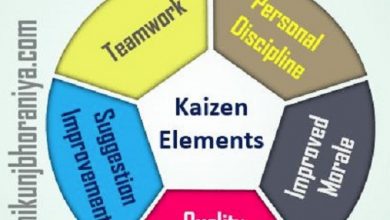Involuntary turnover and Calculation of the index and voluntary turnover
What is voluntary turnover?
In this post we will provide you the information about Involuntary turnover and Calculation of the index and voluntary turnover.
Before we go to the meaning, it is necessary to understand a little more about the turnover itself. Also known as employee turnover rate in a company, within the context of human resources, turnover is the movement in which an employee is replaced by a new employee.
In this sense, a series of factors can influence a company’s turnover, that is, the measurement of the entrance and exit rate of employees in a given period. Among the main causes for voluntary turnover are:
- lack of recognition within the organization;
- physical and psychological wear;
- organizational culture that does not value employees;
- lack of opportunities for professional growth;
- benefits not compatible with the market;
- conflict with the leaders.
How to calculate the index?
It is essential that companies perform a calculation of their turnover. Thus, in addition to recognizing what the internal bottlenecks are, they will know how much money is being invested in a negative way.
To do so, two methods of calculation are used so that the value is clear at the end: r
- the shutdown rate is the first of these. In this formula, the number of dismissals and dismissals is divided by the number of active employees on the last day of the month prior to the analyzed period;
- in the second, similar to the classic approach — which for professionals in the area is outdated — turnover is calculated based on substitutions. Thus, there is an arithmetic average between the number of dismissed people who will in fact be replaced with the increase in the number of hires to fill these open positions.
The final value of this average is divided by the number of employees active on the last day of the previous month. Again, multiplying the result by 100, we get a turnover rate. The calculation of these rates, in an absolute way, is actually quite simple and rudimentary.
What is involuntary turnover?
In involuntary turnover, all dismissals occur as a result of a company decision, that is, in this case, the employee has not yet resigned. This disconnection can be communicated by HR professionals or even by leaders/coordinators.
The reasons can be numerous. See the main ones below:
- a possible financial crisis experienced by the company, which needs to cut its staff;
- low employee productivity, even after numerous feedbacks ;
- bad relationship with the rest of the team;
- breach of existing contracts with the company;
- not suitable with cultural fit .
How to calculate the index?
As with voluntary turnover, it is possible to calculate the involuntary. Follow:
- first, collect the total number of employees in the company;
- then, collect the total number of employees laid off in the last current year;
- gather the number of employees hired in the same period;
- divide the number of employees laid off by the total number of current employees.
What is the difference to voluntary turnover?
Many confuse involuntary turnover with voluntary turnover, but there is a big difference.
Voluntary turnover is action as we know it. In this case, the employee “volunteers” to leave. In short, the position you currently hold is not up to your expectations. Therefore, he prefers to resign.
What are the losses for the company?
Regardless of the type of turnover, the company will be harmed, mainly because it needs to bear costs that include the Consolidation of Labor Laws , the famous CLT.
Furthermore, with involuntary turnover, the company may be losing talent to the job market, even more when the dismissal occurs for reasons that do not involve the employee’s performance per se.
Therefore, the main losses of involuntary turnover are listed below:
- pay for all costs involving hiring and firing;
- shaken organizational climate;
- passing on uncertainty to other employees about possible layoffs ;
- impact the relationship with customers who knew the fired employee;
- loss of productivity.
What are the best tips to avoid involuntary turnover?
There are some essential tips for reversing involuntary turnover. Remembering that, in any of the circumstances, the HR sector must be involved in this process, ensuring that all steps are taken correctly and that the integrity of the dismissed employee is maintained.
1-Keep communication transparent
Transparent communication between any hierarchy within the company makes employees feel free to point out feedback or changes.
2-Encourage capacity building training
By offering training to employees, the company will ensure the development of the team as a whole. In this way, eventual errors will happen less and less.
3-Hold regular meetings
Periodic meetings with employees result in less collective demotivation, that is, the team members will have a voice in the face of problems. Furthermore, it avoids internal conflicts.
4-Hire professionals according to cultural fit
Many companies hire their employees just for their performance during the selection process, but they forget that being in line with the cultural fit is essential. So, don’t miss this point when selecting new contributors.
5-Stay with a strong culture
When an employee goes through a selection process, the entire company culture is demonstrated. However, misunderstandings occur when this employee realizes that, in practice, the company’s culture is different.
The best tip in this case is: present the organizational culture as it is, so that, after hiring, the employee does not feel cheated or discouraged and this ends up in an involuntary turnover.




